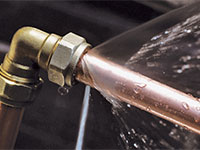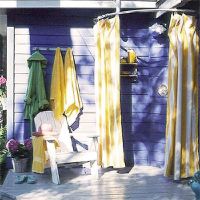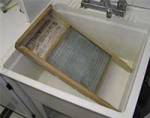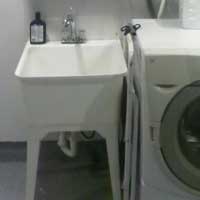Home flooding sucks. There’s just no two ways about it. You may lose your home or valuable possessions, certain types of water damage may not be covered by your homeowner’s or renter’s insurance, the costs for cleanup are often exorbitant and if the damage was due to a burst pipe or faulty appliance you are also liable for the water bill, and it can take months to
restore the damaged parts of your home and you may not even be able to remain in your home during cleanup or restoration if mold or other health concerns are a factor.
Before you fall into the depths of despair, though, there is good news – many of the top five causes of home flooding or home water damage are preventable! Let’s explore the main
culprits behind home floods and what you can do to help prevent or mitigate them.
1. Natural flooding
One of the most common and easily recognizable causes of home flooding is nature. Heavy rains can cause rivers to overflow, wastewater systems to become overwhelmed, and urbanized areas to fill up with water very quickly. Tsunamis, earthquakes, tornadoes, hurricanes, and other weather phenomenon are often accompanied by heavy rains or can cause substantial damage to dams, levees, or municipal plumbing systems and wreak havoc on an entire city or region. Unfortunately, there isn’t a lot you can do to prevent water damage to your home from these causes aside from making sure your home has been built above the base flood elevation with a good foundation, ensuring you have a working pump, and taking emergency measures in the event of a storm.
2. Drainage problems
Drainage problems can be related to storms or other weather phenomenon – for example, overwhelmed
municipal water lines backing up into your home – but are more often related to poorly maintained drains in and around the home. If your main line has a clog, wastewater can back up and flood the house through toilets, sinks,
showers, and floor drains. Typically, these are smaller floods affecting only one area of the home like the bathroom or basement, but if left unchecked for a long period of time there can be substantial damage.
However, you can take steps to help prevent drainage problems in your home by making sure to keep sink, toilet, shower, gutters and other drains clear of common clog-causing substances or debris, installing backwater valves, and having your home’s drainage system regularly
inspected every few years by a licensed plumber to ensure there are no problems.
Learn more about how to prevent clogged drains
3. Appliances
Faulty appliances or their connections to your plumbing
system are notorious for causing home floods. Some basic appliances use large volumes of water and if a supply line bursts or the shut-off mechanism fails, all that water has nowhere to go but onto your floors and through your home. The most common culprits for appliance-related water damage are washing machines, water heaters, dishwashers, and refrigerators.
Fortunately, appliance-related water damage is fairly easy to prevent with modern devices like FloodStops and WaterWatchers that will monitor your appliances for leaks and turn off the
water supply or device before too much damage is caused.
Learn more about choosing flood prevention devices for your home
4. Broken pipes
Depending on the size of the pipe and the size of the leak, a broken pipe has the potential to fill your home with water in minutes. As with almost everything, there are many reasons a pipe could break – frozen pipes burst, fittings spring a leak, the pipe gets damaged by homeowner activities, poor water quality wears down the material, and the list goes on.
Making sure you properly maintain your plumbing is the very best way to prevent water
damage from faulty pipes. Know where pipes are in your walls when decorating or remodeling, take care when digging in the yard, address problems with your water quality, and have your plumbing regularly inspected by a licensed plumber to make sure there are no problems.
You may still eventually have a problem, though, and it is good to be prepared in the event of an emergency. Make sure everyone in your home knows where the main water shut off valve is located and how to turn it off, and keep a few temporary repair items handy in case your plumber can’t get there immediately.
Learn more about temporary emergency pipe repair
5. Poor foundation
A poor foundation will definitely cause problems during a natural flood, but it can also cause flooding problems in areas that don’t have many natural floods. The foundation of your home is a concrete (ergo non-permeable) slab resting comfortably in the ground when the soil is fairly dry. When the ground becomes over-saturated during a big storm or the spring snow melt (even if the water doesn’t rise above ground), your foundation is essentially floating on top of all that groundwater. Water doesn’t compress – it will find its way through any nook or cranny it can – and if you have cracks or other flaws in your foundation, that water will end up in your foundation and possibly in the basement or ground floor of your home.
While it can be upsetting and scary just to think about your home flooding, it is often worse if it
actually happens. We encourage you to educate yourself on natural flood risks in your area and do what you can to protect your home and valuable possessions from water damage caused by
appliances and your home’s plumbing and drainage systems.
Have you experienced a flood in your home before?
Share your story in the comments below!






 Generally, it takes a lot more water to produce processed foods than it does to actually grow fresh foods. Additionally, purchasing locally grown fresh fruits, vegetables, nuts, eggs, cheese, etc. cuts back on the amount of water needed to transport foods. We understand that not all towns or cities have a local farmers’ market and that sometimes this can be cost prohibitive, but it’s a choice worth considering and with careful planning and budgeting can be a positive, healthy change for your family. Another quick healthy tip that can potentially save you hundreds of gallons of water per year is to put a
Generally, it takes a lot more water to produce processed foods than it does to actually grow fresh foods. Additionally, purchasing locally grown fresh fruits, vegetables, nuts, eggs, cheese, etc. cuts back on the amount of water needed to transport foods. We understand that not all towns or cities have a local farmers’ market and that sometimes this can be cost prohibitive, but it’s a choice worth considering and with careful planning and budgeting can be a positive, healthy change for your family. Another quick healthy tip that can potentially save you hundreds of gallons of water per year is to put a 




 This is probably the most important question you should ask yourself as it will influence all of your other sink-buying decisions. If you’re a single lady who only wants a handy place to rinse delicates and scrub stains, chances are you don’t need the same kind of laundry sink a family with 10 school-aged boys all on various sports teams needs. Ask yourself what you do in the laundry room already and what you would *like to do in the laundry room – and try to be realistic. A utility sink is really more of a convenience, and it helps to be specific about how this purchase is going to help you. For instance, will it save you having to run upstairs/downstairs just to rinse a quick stain, does it solve a practical problem like providing drainage for your washing machine, or is it going to keep your house cleaner or more organized by offering a designated place for wet towels, muddy soccer uniforms, handwash only items, etc.?
This is probably the most important question you should ask yourself as it will influence all of your other sink-buying decisions. If you’re a single lady who only wants a handy place to rinse delicates and scrub stains, chances are you don’t need the same kind of laundry sink a family with 10 school-aged boys all on various sports teams needs. Ask yourself what you do in the laundry room already and what you would *like to do in the laundry room – and try to be realistic. A utility sink is really more of a convenience, and it helps to be specific about how this purchase is going to help you. For instance, will it save you having to run upstairs/downstairs just to rinse a quick stain, does it solve a practical problem like providing drainage for your washing machine, or is it going to keep your house cleaner or more organized by offering a designated place for wet towels, muddy soccer uniforms, handwash only items, etc.?


